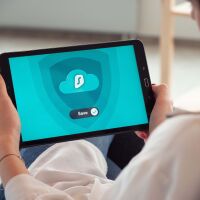Key points
- Use strong, unique passwords for all accounts and enable two-factor authentication to add an additional layer of security.
- Be vigilant about phishing attempts and verify the authenticity of any communication that requests personal information.
- Keep your devices and networks secure, and regularly monitor your accounts for any unusual activities.
Let’s face it – we’re all living in the digital age, protecting your identity online is crucial to safeguarding your personal information from theft, fraud, and unauthorized access.
As the hackers and scammers get more and more sophisticated in the mthods, so too must we the ones who are at risk – from them. Here are some of the best practices to ensure your online identity remains secure:
1. Use Strong and Unique Passwords
Creating strong and unique passwords for each of your online accounts is the first line of defense in identity protection. A strong password should include a mix of letters, numbers, and special characters.
Avoid using easily guessable passwords like birthdays, names, or common words. Consider using a password manager to generate and store complex passwords securely.
2. Enable Two-Factor Authentication
Two-factor authentication (2FA) adds an extra layer of security by requiring not only a password and username but also something that only the user has on them, such as a physical token or a smartphone app to approve authentication requests.
This method significantly decreases the risk of hacking.
3. Be Wary of Phishing Attempts
Phishing scams are a common tactic used by cybercriminals to gather personal information. These scams typically come in the form of an email or a text message that tries to lure you into providing sensitive data.
Always verify the authenticity of requests for personal information by contacting the company directly using a secure method.
4. Secure Your Devices
Keep your electronic devices secure by installing antivirus software, keeping your operating system, applications, and browsers updated with the latest security patches.
Also, ensure that you use secure networks, especially when handling sensitive information. Avoid using public Wi-Fi networks for financial transactions or when accessing personal accounts.
5. Monitor Your Accounts Regularly
Regular monitoring of your financial and social media accounts can help you catch unauthorized or suspicious activities early on.
Set up alerts so that your bank notifies you of any unusual transactions.
Regularly reviewing your account statements and credit reports can also help you spot any discrepancies or fraudulent activities.
6. Use Privacy Settings
Adjust the privacy settings on social media platforms to control the amount of information you share online. Be cautious about the personal details you post online. Even seemingly harmless information can be used by hackers to breach your security.
7. Consider Identity Theft Protection Services
If you’re particularly concerned about identity theft, consider signing up for an identity theft protection service. These services monitor your credit files and the web to detect fraudulent use of your personal information and provide recovery services in case of identity theft.


